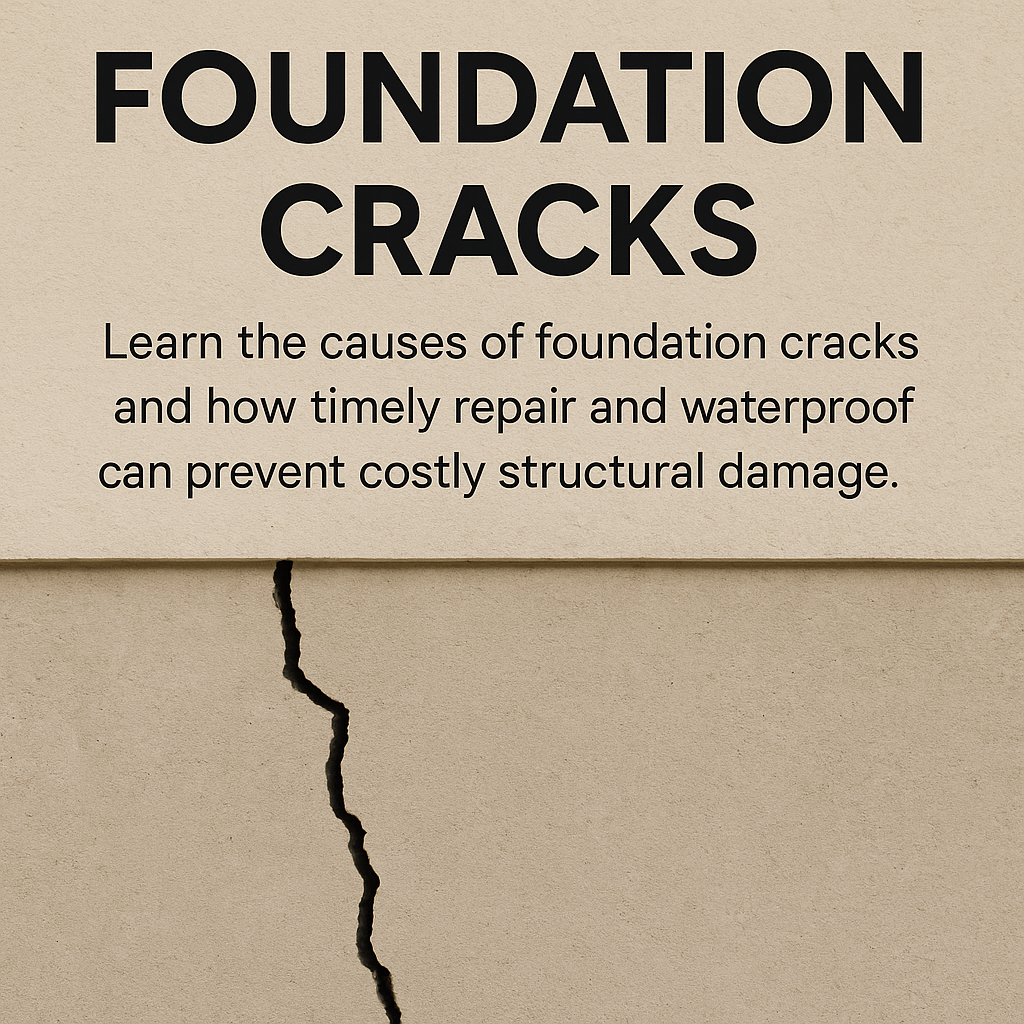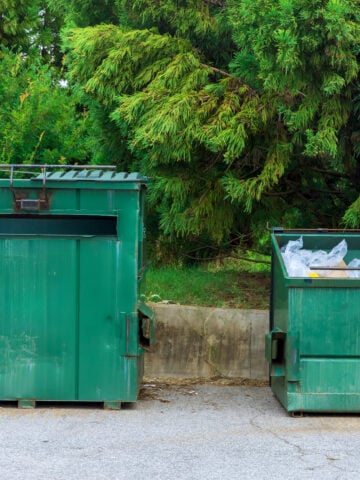Foundation cracks can signal anything from normal settling to serious structural issues. Learn the types of foundation cracks, their causes, and repair solutions like epoxy injections, carbon fiber straps, and basement waterproofing to protect your home from costly damage.

Disclaimer: this post may contain affiliate links, and every purchase made through these links will give me a small commission (at absolutely no extra cost for you!) AS AN AMAZON ASSOCIATE AND REWARDSTYLE MEMBER, I EARN FROM QUALIFYING PURCHASES. See Privacy Policy for additional info.
A crack in the foundation is one of the earliest signs that a structure is beginning to shift or break down. These cracks usually appear in the basement walls or near the corners. Some cracks might be harmless, but others may indicate severe structural issues that require immediate action. When left unattended, they can lead to problems that compromise the property's safety.
Foundation repair helps to prevent the damage from spreading by fixing cracks as well as the underlying cause of the cracks. In many cases, the problem is tied to water intrusion. This is why basement waterproofing often goes hand in hand with structural repairs. It keeps moisture out and protects the foundation from further damage.
Common Types of Foundation Cracks
Most foundations form small cracks over time. These can happen due to natural settling, temperature changes, or moisture in the soil. Small cracks in concrete might not be a big issue, as they are easily fixable. But when they appear near windows, doors, or basement corners, they indicate that the underlying structure is shifting. Knowing the difference can help you avoid costly repairs in the future.
Vertical Cracks
Vertical cracks appear straight up and down in the foundation wall. These appear during the early years after construction. They are caused due to normal settling. If they stay under ¼ inch wide, they are not a major concern. But if the vertical crack gets wider than that, it may point to soil movement that needs immediate attention.
Horizontal Cracks
Horizontal cracks show up when the soil around the home becomes saturated and starts pressing against the foundation. The added pressure can cause the walls to bulge or crack. These are more serious than a vertical crack. When left untreated, these cracks can lead to bowed walls and structural damage.
Diagonal Cracks
Diagonal cracks usually show up near doors, windows, or basement corners. They happen when the foundation settles unevenly. They can signify structure issues when accompanied by other problems, such as sticking doors or windows. If the crack stays thin, you can watch it over time. But if it gets wider, it may need repair.
Hairline Cracks
Hairline cracks are thin surface-level breaks. These are less than ⅛ inch wide. These are common in new concrete as it dries and cures. These tracks are usually cosmetic and do not affect the structure. However, they should be sealed if moisture starts getting through or if they begin to widen.
Stair-Step Cracks
These cracks show up in a staircase pattern, usually in block or brick walls. They show that one part of the foundation is moving more than the rest. The movement is caused due to soil pressure or erosion.
What Causes Foundation Cracks?
Foundation cracks usually point to stress somewhere in the structure of the house. This stress can be caused by soil pressure, moisture, or poor construction. It is necessary to understand the root cause of foundation cracks so you can decide if the crack is harmless or needs immediate repair.
Soil Movement and Settlement
Foundations settle over time as the soil beneath them shifts. In areas with clay-rich soil, there is expansion and shrinkage during wet and dry seasons, respectively. This movement of soil can push against the foundation repeatedly. Over time, the pressure adds up and can lead to visible cracking.
Water Pressure and Drainage Problems
When water collects around the base of a house, it pushes against the foundation from the outside through hydrostatic pressure on the walls. If there is no proper drainage system installed or if the gutters are clogged, the pressure increases. This leads to horizontal cracks in basements.
Poor Construction or Weak Concrete
When construction is done poorly by using the concrete mix that was weak or if the curing process is rushed, the structure may develop cracks earlier than expected. Missing rebar or poor reinforcement planning can also leave foundations vulnerable to this stress.
Tree Roots and Nearby Excavation
Large trees planted too close to the house can cause foundation problems. Tree roots pull moisture from the soil, which may lead to uneven settling. Heavy equipment or digging near the foundation can also disturb the soil and trigger movement.
Natural Disasters
Heavy storms and floods can gradually damage the foundation. Even minor earthquakes may trigger cracking if the structure is already under stress.
How Do You Repair Foundation Cracks
The correct way to fix a foundation crack primarily depends on the root cause of the crack and how serious the damage is. Some cracks can be sealed easily. Others need structural repair and long-term drainage fixes. The primary purpose of foundation crack repair is to prevent movement, block water, and prevent further damage.
Carbon Fiber Straps
If a wall is bowing or cracking under pressure, carbon fibre straps can be installed across the surface. These help to reinforce the wall and stop the inward movement. They are used along with injections or anchors.
Epoxy or Polyurethane Injections
For narrow cracks in poured concrete walls, an injection system is often used. Epoxy bonds to the crack and restores strength. Polyurethane foam injection is more effective when the crack is leaking, as it expands and blocks moisture from entering. This method works well for stable cracks that are not growing.
Wall Anchors and Steel Braces
If a foundation crack shows signs of structural failure, the repair crew may use steel braces or wall anchors. Anchors are set into the soil and attached to the wall from inside the basement. This pulls the wall back into position and slowly stabilizes it.
Underpinning and Pier Systems
If the foundation is settling or sinking unevenly, support piers may be needed. These are installed deep into the ground under the foundation to support the load of the house. This process, known as underpinning, is often the only option for severe foundation movement.
Sealing and Waterproofing
Sealing cracks and controlling water flow is one of the most necessary parts of a foundation crack repair. This is why basement waterproofing goes hand and hand with foundation repair. This process may include exterior drainage and sump pump installation, for sealing the wall surface to keep moisture out.
Why Fast Foundation Repair is Necessary
Foundation cracks do not fix themselves. Waiting to see what happens without taking any action usually makes things worse. When repairs are delayed, moisture can seep in and damage walls, flooring, and insulation. Basement walls may start to bow. What could have been a small repair can easily turn into a structural work that takes a lot of time and money to repair.
In cities like Charleston, soil conditions vary between sandy and clay-heavy. Changes in weather and soil make foundations more vulnerable. This is why many homeowners should call Charleston foundation repair contractors early, before the damage spreads. A prompt response to foundation cracks keeps the problems small and manageable.
Final Thoughts
Foundation cracks are easy to ignore in the beginning. But cracks do not always stay small. Early intervention can help protect the structure, keep moisture out, and prevent bigger problems down the road. If you notice cracks forming near basement walls or windows that keep growing, it is worth getting them checked. Understanding the type and causes of foundation cracks can help you prevent bigger issues and avoid more costly work later.







Leave a Reply